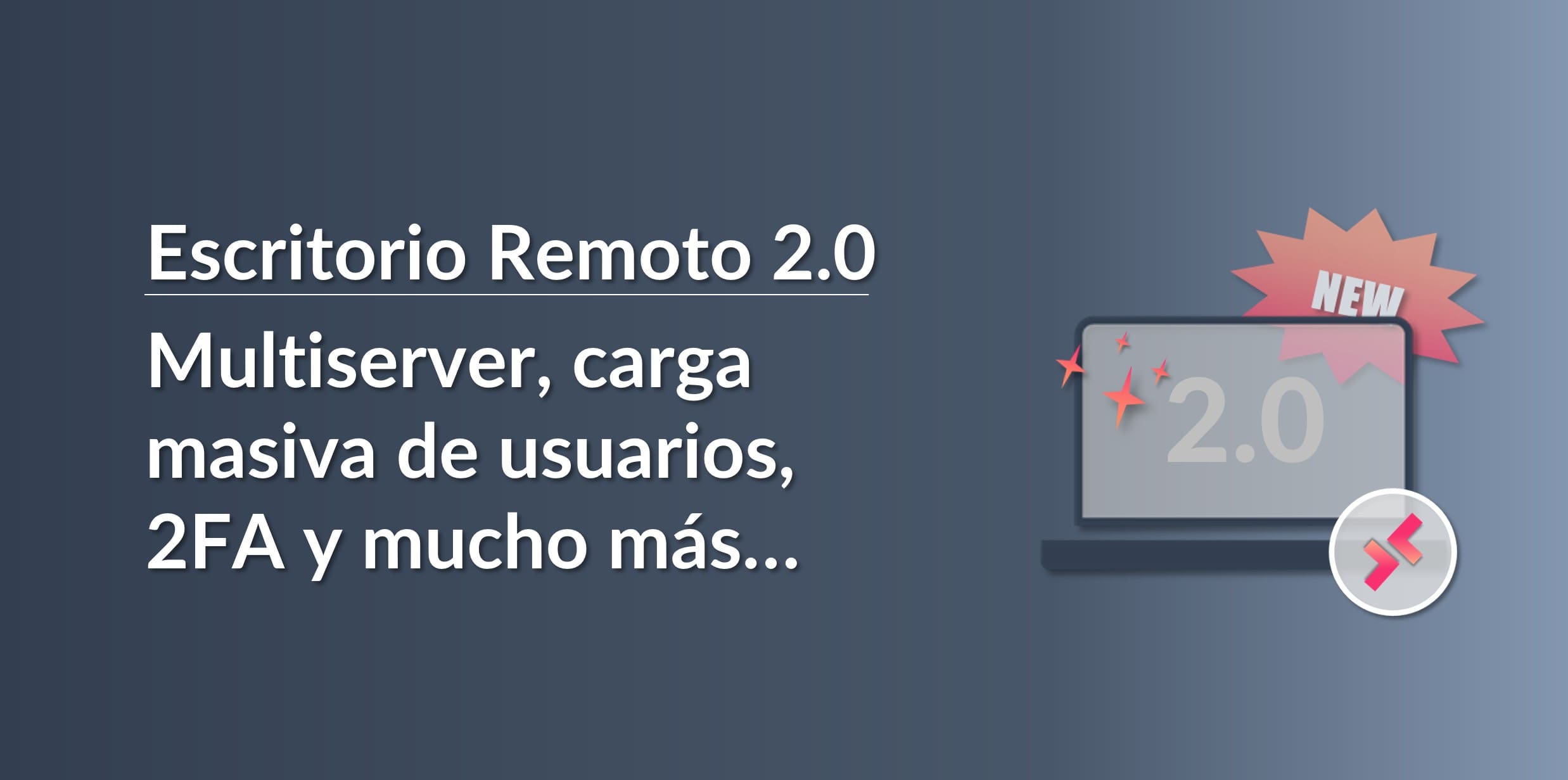
Our Remote Desktop service just keeps getting better! We’ve recently developed some new features to improve service security and make it easier to deploy larger environments, and that time has come for the grand unveiling! This new version of Remote Desktop adds several important new features as a response to the various requests we received over the last year. These include:
- Multiserver + Load Balancer. Before, the service was somewhat limited. It was only possible to deploy one server per Remote Desktop subscription. This new Multiserver feature allows you to deploy multiple servers on a single subscription and assign users to each virtual machine using the Load Balancer.
- Bulk User Import. You can now bulk import users and manage them all using your Remote Desktop settings. Previously, you had to add users one at a time, making the process somewhat tedious if there were a lot of them. Now, you can upload a CSV file to import all your users at once, making the whole affair much simpler!
- Two-factor Authentication (2FA) for Remote Desktop. The RDP connection now also features Two-factor Authentication. From now on, multi-factor authentication is not just limited to the user portal but also the Windows Server used for the Remote Desktop service.
Read on to find out more about each of these new features and where to find them on the platform.
1. Multiserver on Remote Desktop
You can now deploy a Remote Desktop environment big enough for a large number of users without sacrificing quality or performance. The new multiserver feature (which was already available for the Servers service) and the load balancer give the Remote Desktop service an added dimension to cater for larger organisations.
With the Multiserver feature, you can deploy multiple servers per Remote Desktop subscription to increase total processing capacity. By combining this feature with the new load balancer, you can also scale your infrastructure horizontally, optimally sharing the load across your different virtual machines.
Where to Find Multiserver on Remote Desktop
To add a new server and create a multiserver environment on Remote Desktop, go to the following screen on the platform:
Remote Desktop Subscription > Servers

Once t here, you can add as many servers as you need.
If you would like to find out more about this new feature, check out the tutorials below. We’re sure that you’ll find them really useful and informative:
- How to Create a Multiserver Environment on Your Remote Desktop Subscription
- How to Add a Load Balancer to Your Multiserver Remote Desktop Environment
2. Bulk User Import and Configuration
Another issue our Partners encountered when configuring their Remote Desktop environments was the time it took to add all their users. Previously, you had to register each user one by one, making the process rather tedious when setting up a large environment.
All that has now changed. From now on, you can bulk import users for your organisation using a simple CSV file, making everything much quicker and easier.
How to Bulk Import Users
To bulk import users to your Remote Desktop service, go to the following screen on the platform:
Remote Desktop Subscription > Users

Once on the «Users» screen, simply click on the «Import Users» button in the top right corner to upload your CSV file.

If you’d like to learn more about bulk importing users, check out the following tutorial, where you’ll find useful information to help you through the process: «How to Bulk Import Users to the Remote Desktop Service».
3. Two-factor Authentication (2FA) on Remote Desktop
The connection to the apps server already featured numerous protection measures (port 443, encryption, IDS, perimeter security, etc.), but when it comes to security, you can never have too many layers.
However, the RDP connection to the server now also features Two-factor Authentication. From now on, multi-factor authentication is not just used on the User Portal but also on the Remote Desktop service.
How to Configure 2FA on Remote Desktop
To configure two-factor authentication for the RDP connection to the Remote Desktop server, go to the following screen on the platform:
Remote Desktop Subscription > Users

If you would like to find out more about this feature, check out the following tutorial: «How to Set up 2FA on Your Remote Desktop Server«.
Summary
We are always looking to improve our Remote Desktop service and add value for IT companies. As a result, we are happy to receive any feedback you may have. Based on what we’ve heard back from our Partners, we’ve added 3 new features to improve security and make it easier to deploy large-scale environments.
We hope that you find these features really useful. Thanks for choosing Jotelulu!

